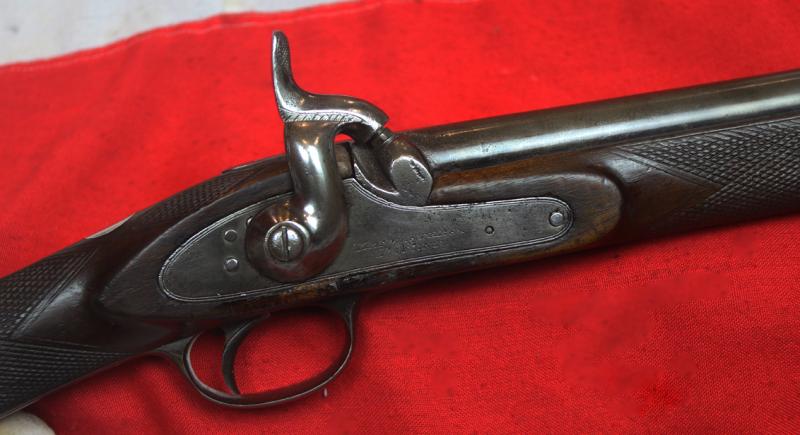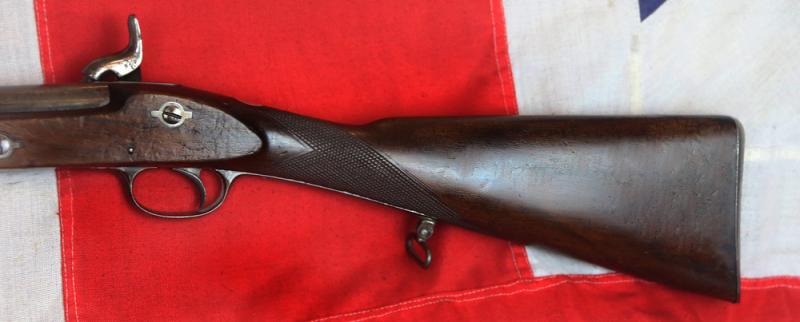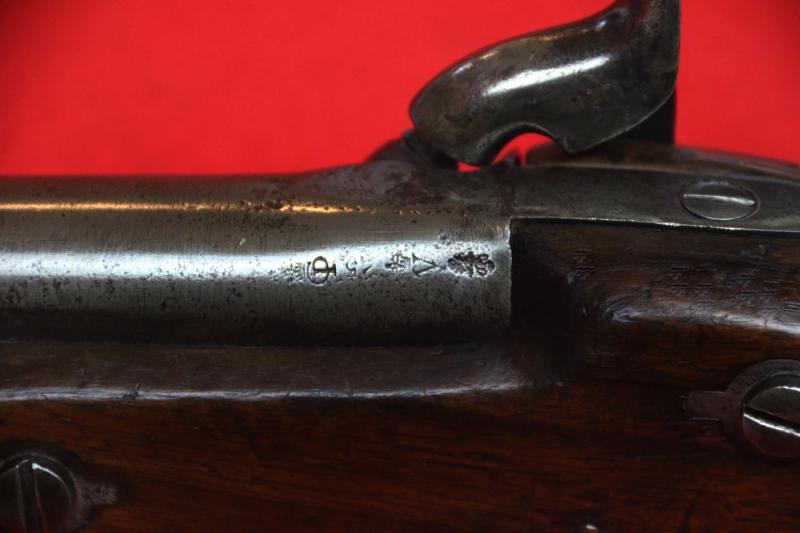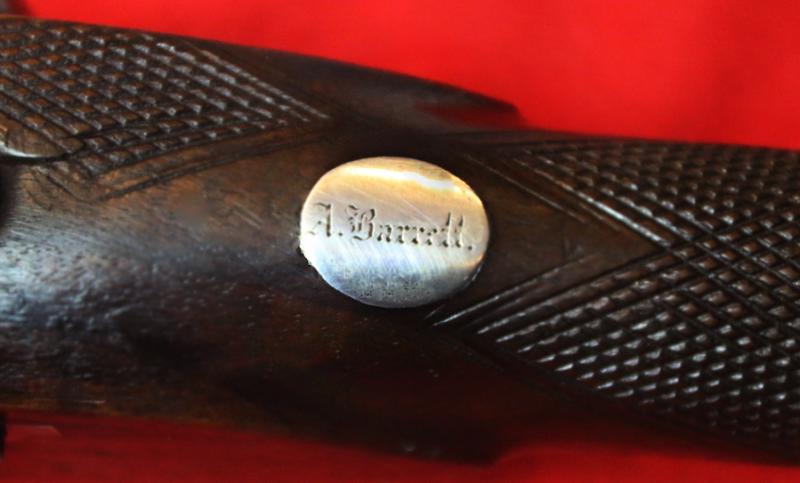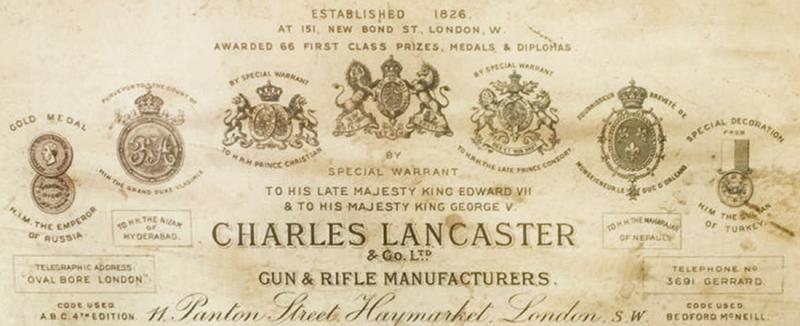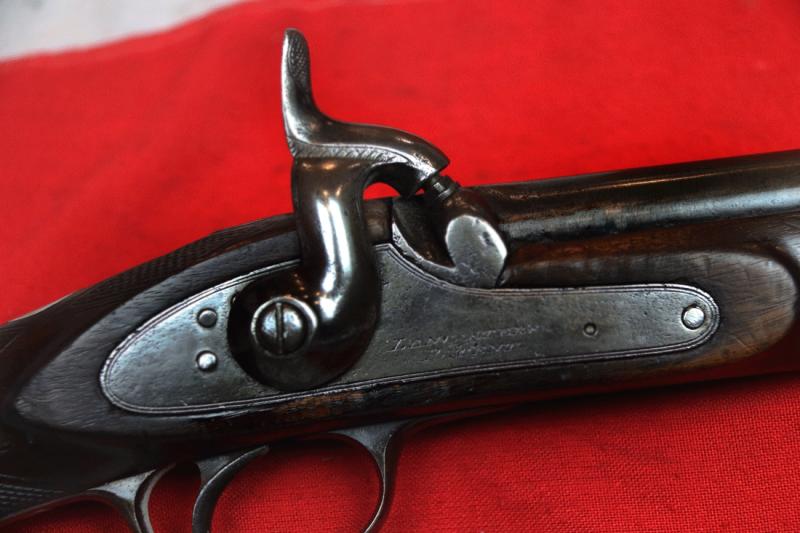Very Rare Antique 1850's 'Lancaster Patent' Two-Band Oval Bore Rifle-Musket 50 Bore Lancaster’s Patent Royal Engineers Rifle!
An antique extremely rare and highly desirable Two-Band Rifle-Musket by Charles Lancaster, manufactured in London, England circa 1850's. In simply fabulous condition for its age. Charles William Lancaster (1820-1878) was devoted to his craft and was among the best England had to offer in the field of firearms making and invention. It was around the year 1850, when he conceived the idea of the oval bore. Indeed, it is very slightly oval, almost imperceptibly and the rifling is very subtle and this rifle could easily be mistaken for a smooth bore. The rifling is also “gain twist”, meaning that the twist gets faster as the projectile approaches the muzzle. He believed that the oval bore was the future form all rifles and cannons should take due to the design’s inherent ability to mitigate the fowling that came from using black powder, as well as their accuracy. He would put his idea to the test when he entered the government trials for what would become the Pattern 1853. He would spend much of 1852 and 1853 in doing so. His oval bore proved more accurate and less prone to foul than the competition, though the very subtle rifling was prone to wear out sooner with much use than conventional rifling. His system was not ultimately adopted for the Pattern 1853 infantry rifle-musket, but it was adopted in smaller numbers for sapper muskets.
This example is a 2-band rifle, the type which could have been made and sold for the Royal Engineers, Sappers and Miners, and volunteer units during this period, but this is a particularly rare chequered stock officer’s version, with a name engraved silver cartouche.
The Volunteer Movement was a response to the Crimean War as well as heightened tensions between England and France and the outbreak of war between France & Austria. England had a lot of territory to cover between the British Isles and its colonies, and there was imminent risk of being pulled into another conflict. This was a popular movement to create home defence. These had a great deal of autonomy initially, though many were eventually folded into the regular British Army. The rifle has fantastic sights stamped with Enfield inspector stamp.
We bought the entire small collection from the widow of a 'Best of British Empire Rifles and Bayonets, Both British and German' collector, who acquired them over the past 40 years, and only ever kept the very best he could afford to keep. Act fast they are selling really fast, three rifles and four bayonets and a cutlass have sold today alone. Top quality and condition,19th and 20th century scarce British and German collectables are always the most desirable of all.
Code: 25145
2750.00 GBP




